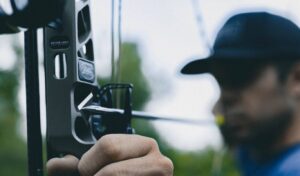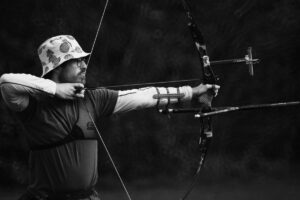Through intense management and the implementation of sound conservation practices, a number of native wildlife species now flourish across the United States, where they once were scarce.
Few species of wildlife have benefited quite as significantly from these efforts as the Whitetail Deer and Wild Turkey.
In fact, both of these species are now extremely abundant across the country’s landscape.
As a product of this abundance, it is not uncommon to encounter both deer and turkey on a single hunt. However, this leaves many hunters to question whether or not deer will come out and feed in tandem with a flock of turkeys.
Contents (Jump to Topic)
ToggleRead on to learn more about the effects that turkeys have on deer feeding patterns
Adapt and Overcome
The home ranges of both deer and turkey commonly overlap due in large part to the similarities in their typical diets. Both species forage heavily upon any lush vegetation that is available in a bid to sustain themselves throughout various parts of the year.
Some food sources shared by deer and turkey include clover, acorns, and native grasses.
While one would tend to believe that this would create at least some form of competition between the two species, this couldn’t be further from the truth.
Deer and turkey are often found foraging in the same fields within mere feet of one another. This is a relatively common sight, especially in areas ripe with agriculture, where crops become the forage of choice.
The fact that deer are naturally curious also amplifies the occurrence of such interactions.
Deer often seem to be attracted to flocks of turkeys, likely due to the fact that their presence typically signifies the availability of food.
If turkeys are actively feeding, a meal surely awaits for any observative Whitetail as well.
A Sense of Security
In certain instances, deer and turkey have been observed heeding the natural instincts of the opposite species.
Deer tend to approach a given food source with less restraint when it is already populated by turkeys than they otherwise would if no other wildlife were present.
This occurs in much the same way as it can be seen when one deer joins several others in a given field.
Above all, the presence of turkey in a particular field is believed to provide deer with a certain level of confidence, as they associate this sight with the notion that no danger is present.
If one or more members of a flock were to have sensed danger, they would likely have already evacuated the area as a whole.
Along the same lines, deer are usually quick to clear a field if the flock of turkeys with which they are feeding suddenly departs as if startled.
The wild turkey tends to be among the most skittish of game species, providing ample warning of impending danger to any deer that are feeding nearby.
Everything In Moderation
Like anything, there are exceptions to the rule that deer and turkey tend to have little problem feeding in each other’s presence.
In most instances, the larger the flock of turkeys, the less apt deer are to feed freely by their side.
This is, of course, unless plenty of room in a given field allows deer to find their own space away from the sizable flock.
In most cases, deer and turkey coexistence are at its peak when only a handful of turkeys are present. In many cases, deer can even be seen feeding in peace with a flock of 10-20 birds.
However, deer often show some sign of reluctance when faced with the notion of feeding with large fall flocks that can grow to more than 50 turkeys in size, though this is not always the case.
It is also worth mentioning that deer seem to adapt more readily to feeding in the accompaniment of larger flocks in areas where turkey populations are the heaviest.
This is due as much to necessity as any other factor of relevance.
Opportunity Awaits
The fact that deer and turkey can coexist provides a wealth of opportunities for many hunters. In several states, fall archery season for turkey and deer overlaps.
This gives a hunter the chance to harvest one of each species on a single given outing. In turn, it provides a little bit of added excitement whenever one goes afield.
Even in states where these two seasons do not coincide, a hunter can scout for one species while hunting for the other.
This is based solely on the fact that deer and turkey can be found roaming many of the same woodlots and grazing in a number of the same fields as one another.






